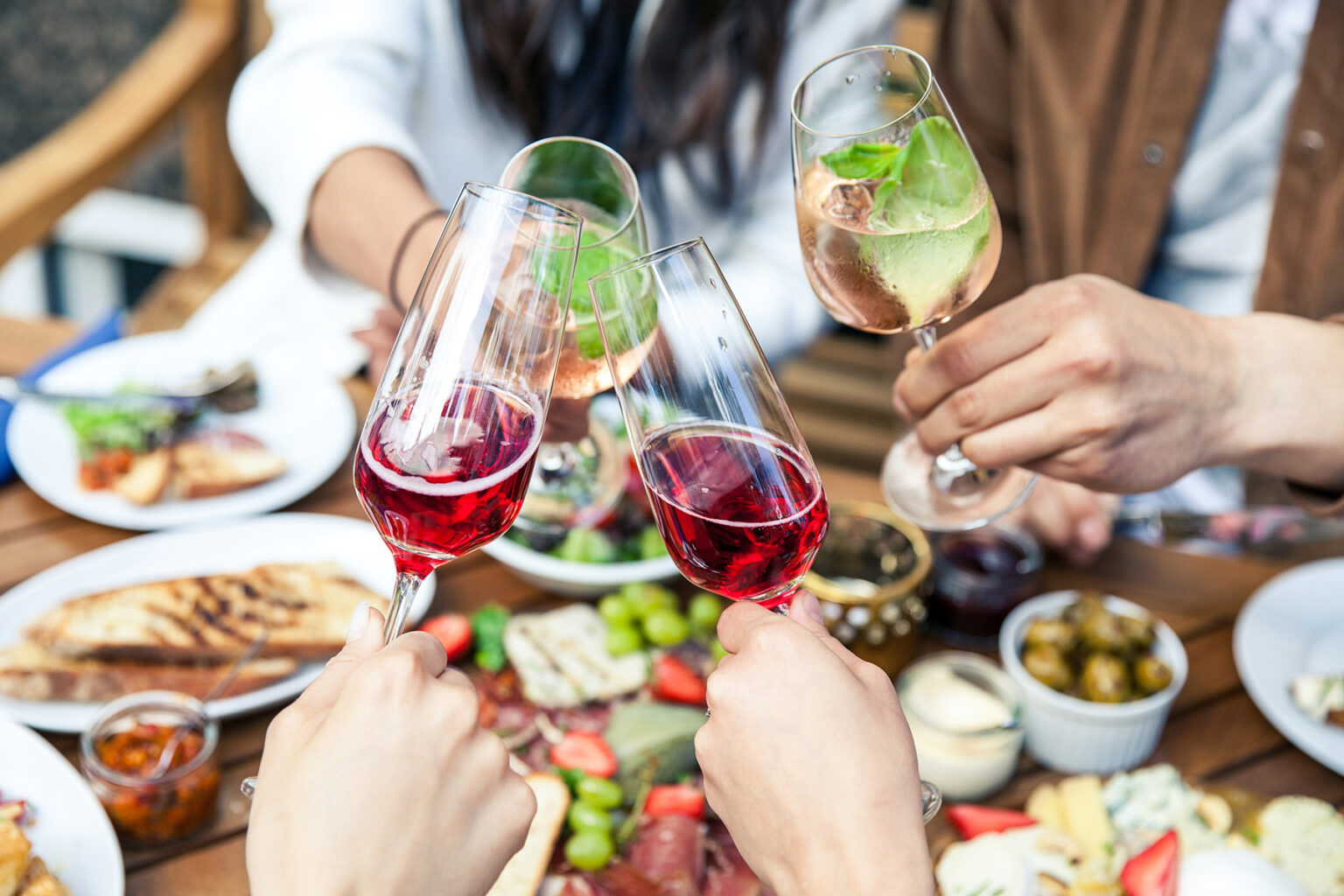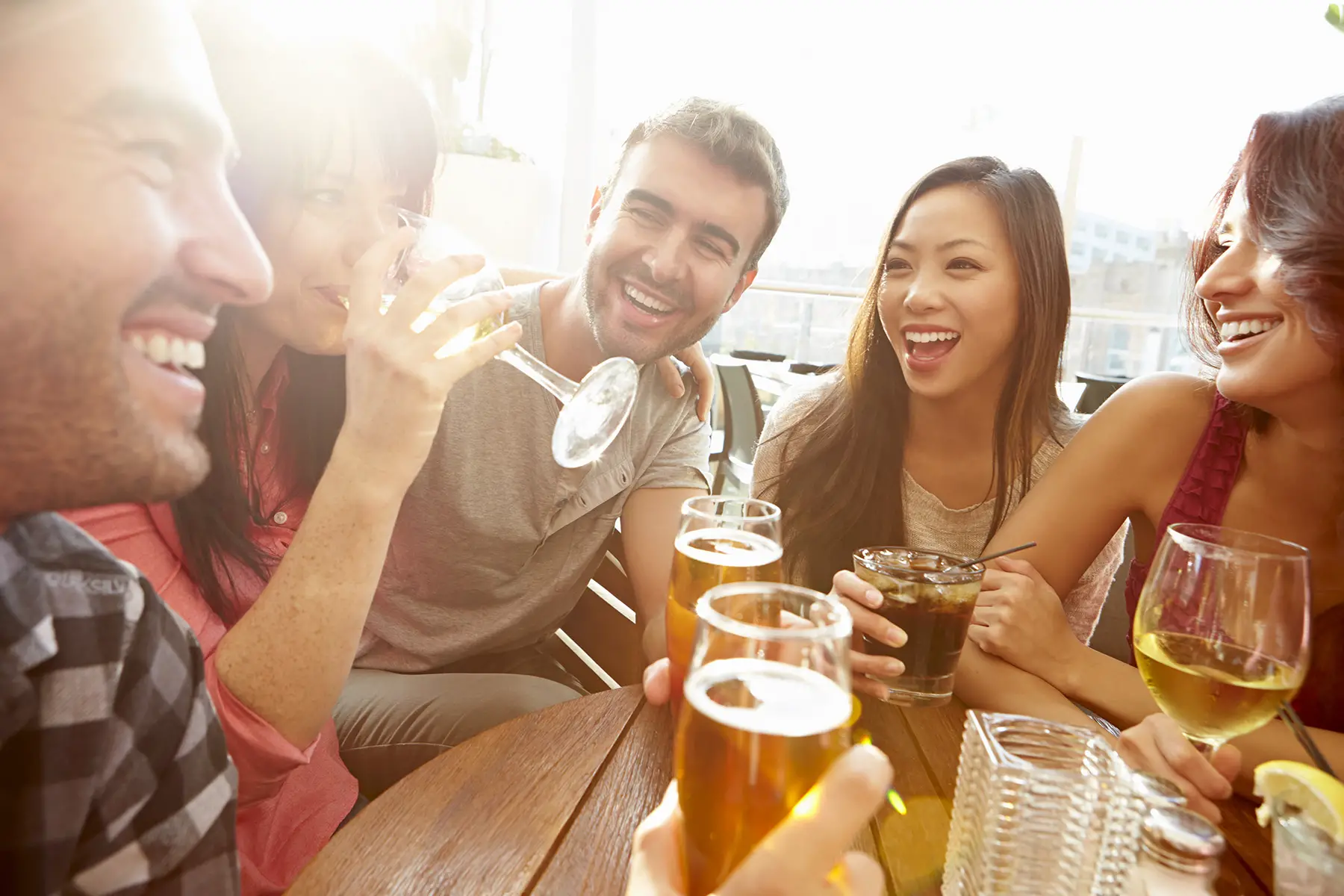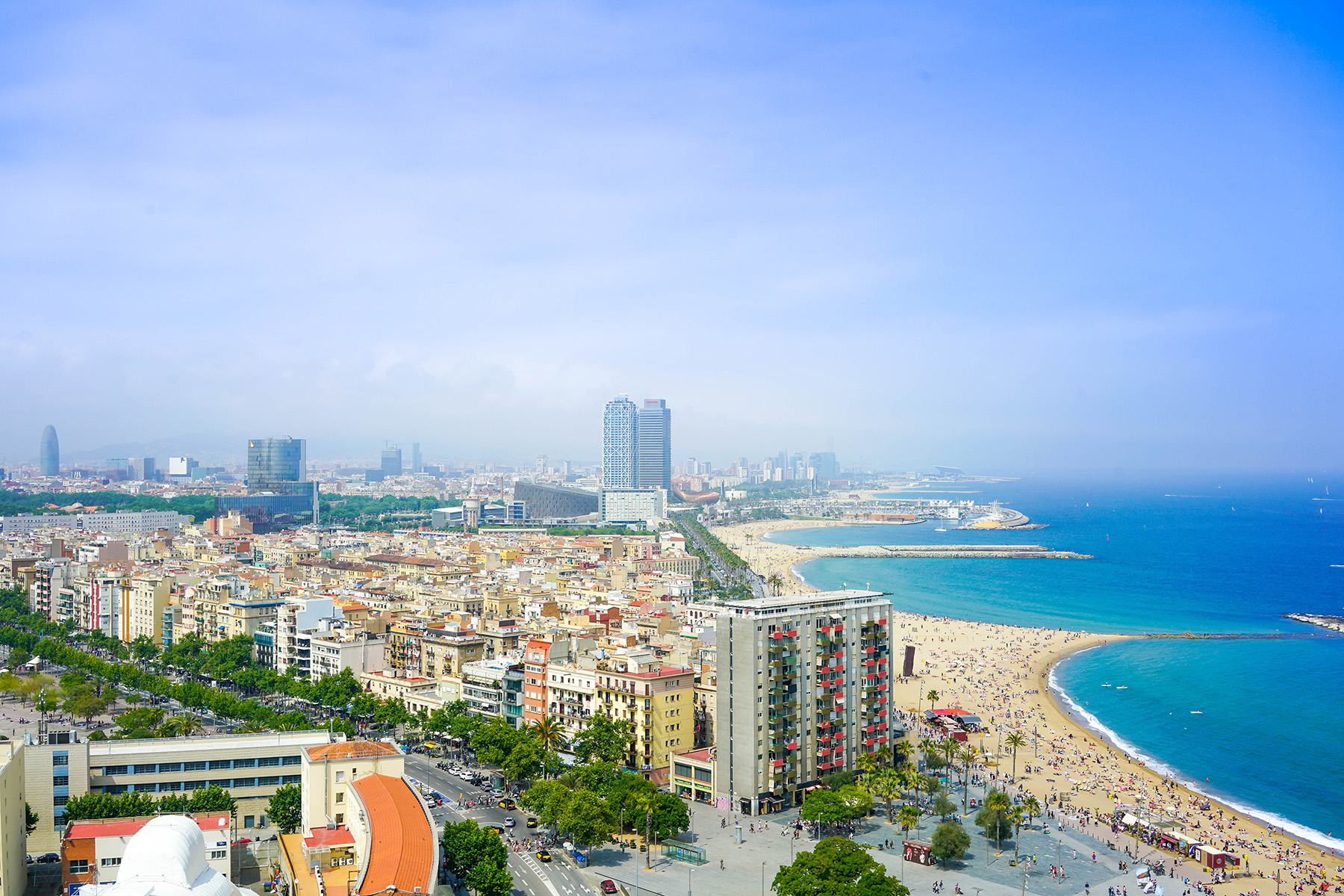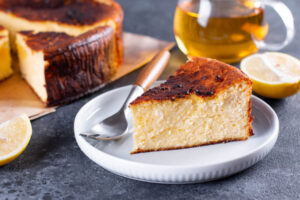The Spanish tend to live life to the fullest. Whether they are marking big moments or small, there is always a reason to celebrate in the land of fiestas. Of course, being a top producer of beer and wine means that there’s ample liquid to fuel these festivities in Spain.
If you’re ready to dive in, this guide will help you navigate the world of Spanish drinks and drinking culture, including the following:
Where to drink in Spain
It’s safe to say that alcohol plays an important role in the everyday lives of the Spanish. Indeed, some 60% of the locals say they visit a bar, cafe, or restaurant at least once a week to enjoy a drink with friends, family, or coworkers. Therefore, it should come as little surprise that (moderate) amounts of wine and beer make up an important part of the social life and local Mediterranean diet in Spain.
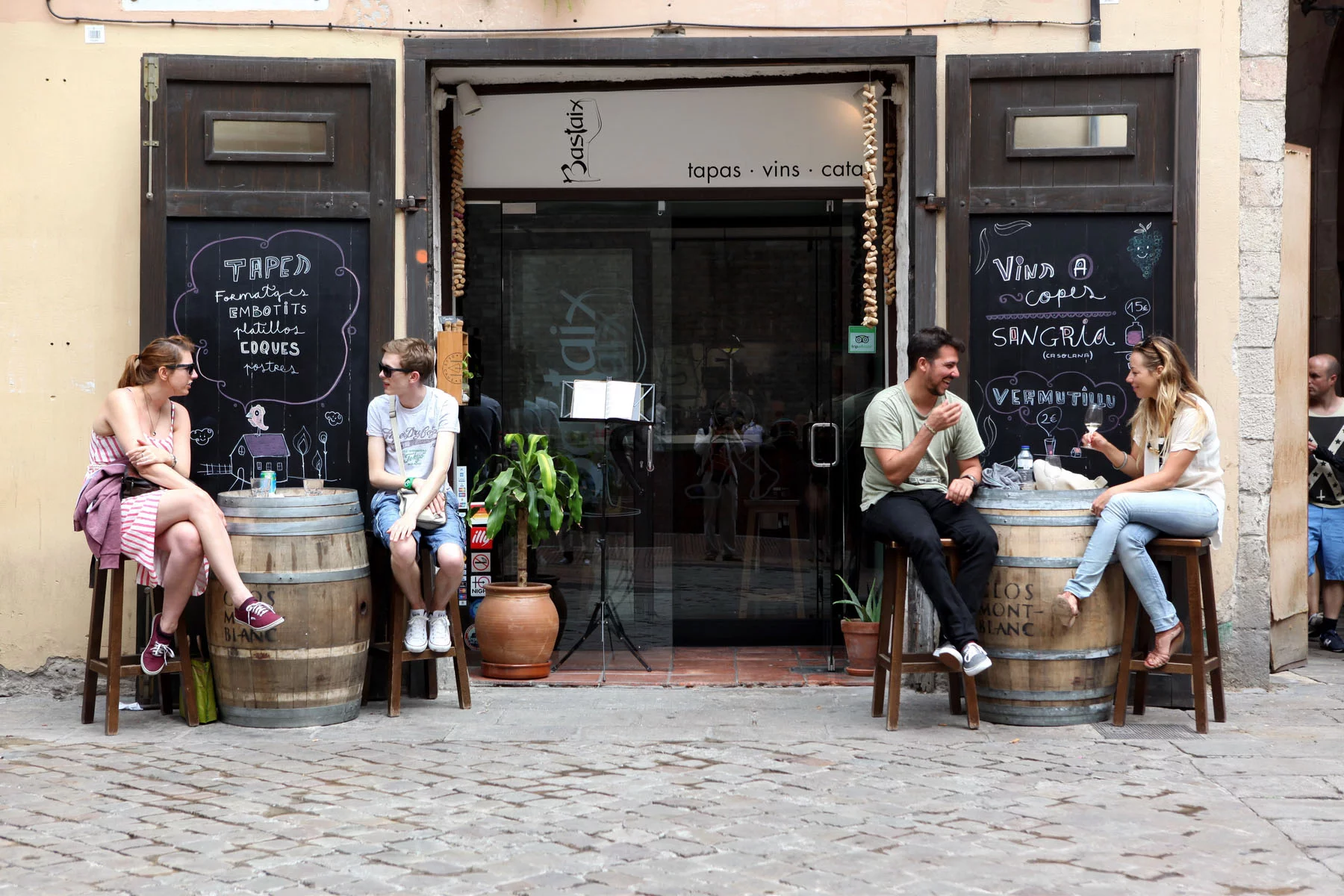
In fact, prior to COVID-19, the country had the highest number of bars and restaurants per head in the world; in other words, one bar or restaurant for every 175 inhabitants. Spanish bars and restaurants have such cultural importance that there is even a campaign to have them declared as UNESCO World Heritage Sites.
In Spain, bars are often like an extension of the home. These are the places where locals gather to watch a football game, celebrate a special occasion, or simply enjoy a meal and a drink. Your local restaurant is another great place to have a drink. Here, you can enjoy a range of fine Spanish wines to pair with exquisite dishes.
And if that isn’t enough, there are even tours and festivals that are dedicated to all things alcoholic. These include the Albariño Wine Festival, Barcelona Beer Festival, and the Festival of the Natural Cider in Gijón. Of course, the local Spanish supermarket is a great place to grab a bottle of red or some beers before heading to a friend’s place for dinner, too.
Hot drinks in Spain
Coffee
As well as being popular spots to unwind with something a little stronger, bars are also a common stop for breakfast in Spain. Indeed, during your first week in Spain, you may find yourself enjoying all your meals in the local bar. These are great places to get coffee – and the Spanish famously love their café. You’ll find that in Spain, it’s always a good time for un café, whether you enjoy it during a work break, after lunch, during la merienda (afternoon snack time), or even after dinner.
Popular coffees include:
- Café con leche: coffee with milk is the literal translation, but this consists of espresso with steamed milk, usually in equal parts. It can be ordered darker or lighter
- Café cortado: espresso ‘cut’ with a little milk, served in smaller cups
- Cappuccino: the traditional measure is 1/3 espresso, 1/3 steamed milk, and 1/3 frothed milk
- Café solo: black coffee (no sugar, no cream)
- Carajillo: coffee with liquor, usually brandy, whiskey or Baileys Irish Cream. Usually comes in a glass
- Trifásico: basically the same as a carajillo but with a bit of milk as well
- Bombón: a café solo with leche condensada (condensed milk)
- Café Belmonte: a bombón with an added dash of brandy
- Manchado: a café con leche with fairly less coffee. Manchado means ‘stained’, which refers to how the milk appears stained by the small amount of coffee
- Café con hielo: Coffee shot with ice – but don’t expect a fancy frappuccino as the waiter will instead bring your hot coffee with an extra glass of ice cubes which you can add yourself
- Café desgraciado: Translated as ‘miserable coffee’, it consists of decaf coffee (descafeinado), skim milk and saccharine (sacarina) as a sweetener

Spain ranks 23rd in the world for coffee consumption per person per year, with the average Spaniard consuming 4.5 kilograms annually. The Spanish are only outdone in terms of coffee consumption per head by the average Italian, who drinks almost 6 kilograms of it, and the French, at 5.4 kilograms.
Hot chocolate
Spain has a long and enduring love affair with chocolate – and with thick, velvety, hot chocolate, in particular. The country’s fondness for all things chocolate and cocoa saw them drink 162 million kilograms of it in 2019; down from a peak of 165.5 million kilograms in 2013.
In many parts of Spain, hot chocolate is actually a breakfast drink that is often paired with churros; a popular fried pastry that locals like to dip into their drinks. However, in Barcelona, people tend to drink it in the afternoon and pair it with melindros (ladyfingers). Apart from cocoa, milk, and sugar, Spanish hot chocolate also includes a little cornstarch to thicken it up.

Interesting fact: the Spanish make such good hot chocolate that it was once banned. In the 1500s, the Conquistadors (soldiers in the Spanish and Portuguese army) set out to conquer the New World and brought cocoa back to Spain. Hot chocolate, which was already revered by Mayans and Aztecs, quickly spread its dark and rich goodness to the rest of Europe and the world. It was favored by Spanish nobility and became so popular that authorities banned the public sale of the drink in 1644. Of course, this didn’t stop Spaniards from seeking out and illicitly enjoying it.
So, whether you visit one of many granjas (dairies turned cafes) in Barcelona, or chocolaterías (chocolatiers) in Madrid and elsewhere, your Spanish hot chocolate fix is never far away.
Tea
If you’re moving to Spain from a tea-loving country, then you’ll be relieved to know that it isn’t hard to find. While the Spanish aren’t traditionally big tea drinkers, immigration from tea-drinking nations such as the UK and Morocco has led to a change in attitudes towards the drink.
The province of Granada, for instance, has experienced something of a tea culture due to Arabic and North African influences. However, the tea rooms found here offer an altogether different experience from the British high tea influences found in Madrid. This is because the tea culture in Spain mirrors immigration patterns. Therefore, you can go from sitting on a cushion sipping a tea infusion and puffing on a hookah, to sitting in a high-backed chair eating scones and sipping on black tea.
Popular teas include:
- Negro: Black tea
- Manzanilla: Camomile tea
- Rojo: Red tea
- Verde: Green tea
- Té de Fruta: Fruit tea
In Spain, tea is also used for its medicinal properties to relieve stomach aches, which may come in handy if you happen to go overboard when indulging in all that delicious Spanish cuisine.
Soft drinks in Spain
Like many parts of the world, soft drinks are very popular in Spain. The National Association of Soft Drink Manufacturers claims that cola, orange, and lemon are the preferred flavors (in Spanish) of soft drinks among Spaniards.
Popular soft drinks
Leading brands in the soft drinks sector in Spain include global giants like Coca-Cola, Orangina, Pepsi, and Red Bull. There are also a few Spanish brands like Refrescos Iberia, Refrescos del Atlántico, and Ahembo for you to try. Among these local soft drinks are La Casera, a brand of soda that is often used in wine mixes, and Kas, which comes in flavors ranging from lemon and grapefruit to bitter (herbal extracts) and apple.
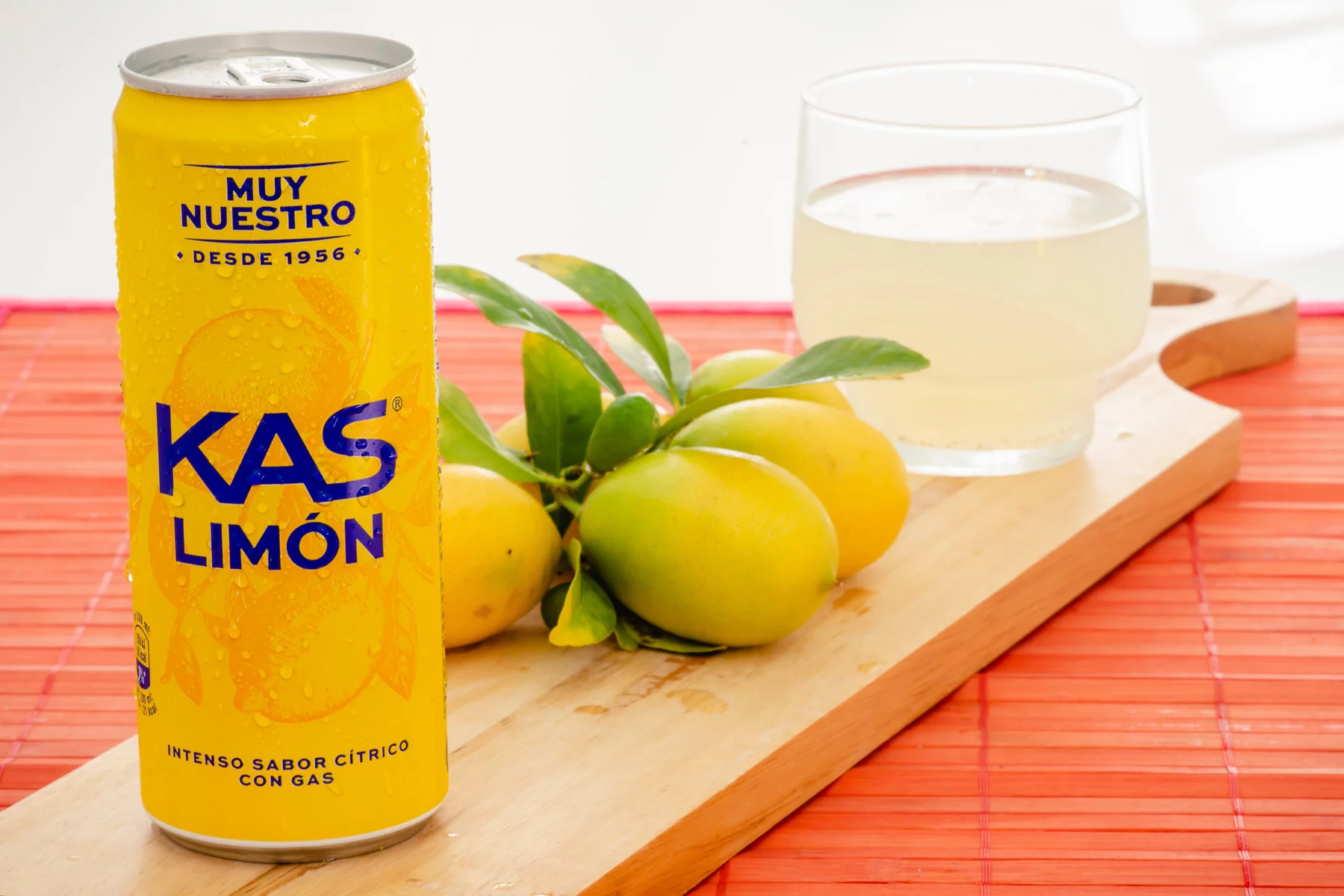
Similar to other parts of the world, people in Spain are switching to sugar-free soft drinks due to the many studies linking sugar intake to increased risk of illness, such as obesity and hypertension. As a result, sugar-free cola has overtaken regular cola in terms of household consumption.
Sugar intake has been steadily declining in Spanish households in recent years; from about 4 kilograms of sugar per head in 2013 to 3.1 kilograms per head in 2019. Even so, Spain has had a fairly high rate of diabetes in recent years. In 2019, for instance, 6.9% of people aged 20 to 79 in the country were diabetic. This is just slightly higher than the European Union average of 6.7%. Research shows that water is still the most consumed non-alcoholic beverage in Spain, followed by milk and then soft drinks. In fact, on average, soft drinks contribute to 2% of people’s energy intake.
Alcohol in Spain
Alcohol laws in Spain
Similar to other European countries, the legal minimum age for buying alcohol in Spain is 18. This includes beers, wines, and spirits. The country also has strict laws surrounding drink-driving. The legal limit of blood alcohol content in Spain is 0.5 grams per liter of blood. This is generally in line with most other European countries but stricter than some, such as the UK which has a drink-drive limit of 0.8 grams per liter of blood. In Spain, the limits are even lower (0.3 grams) for professional and novice drivers.
Spain has 17 autonomous regions and each one has its own laws that regulate certain aspects of the sale and consumption of alcohol. So, to avoid falling foul of the law, be sure to check local authority rules wherever you may be in Spain.
Alcohol consumption
Alcohol consumption is part of daily life in Spain. Drinking beer with friends at a bar or enjoying a glass of wine with a meal is all part of the culture. On average, Spaniards have their first drink (in Spanish) at 16 years and seven months of age.

It comes as no surprise, then, that the Spanish consume twice as much alcohol per person per year than the global average. In 2018, Spaniards drank 12.7 liters of alcohol per head, whereas the global average was 6.2 liters. This is also slightly higher than the EU average (11 liters), and just a little lower than Germany’s average of 12.9 liters.
Spain has the second-highest rate of daily alcohol drinkers in the EU – just behind Portugal. However, the same report reveals that while 13% of Spaniards are daily drinkers, they take a very measured approach to drinking. In fact, the Spanish are the third least likely nation to binge drink, after the Cypriots and Italians. Perhaps one reason for this is that, in Spain, alcoholic beverages are frequently drunk during meals.
Popular alcoholic drinks in Spain
With a strong drinking culture and a lifestyle that suits simply lazing the day away on a terrace with friends, it’s safe to say that you have plenty of options when it comes to choosing your tipple in Spain. A survey from 2018 (in Spanish) showed that Spaniards prefer beer, wine, and mixed drinks over other alcoholic beverages.
Beer
Spain is the EU’s third-largest beer producer, after Germany and Poland. In fact, it is estimated that one in every 10 alcoholic beers produced in the EU is made in Spain.

Although Spain is famous for its high-quality wines, statistics show that most Spaniards actually prefer beer. Indeed, there has been a noticeable shift in drinking habits in recent decades. Part of this is due to the growing craft beer movement in the country. The beer industry as a whole has a significant impact on the Spanish economy. In fact, almost 90% of the beer consumed in Spain is brewed domestically. No surprise, then, that the average Spaniard drinks 52 liters of beer a year.
Popular Spanish beers include:
- Mahou
- Estrella Galicia
- Cruzcampo
- San Miguel
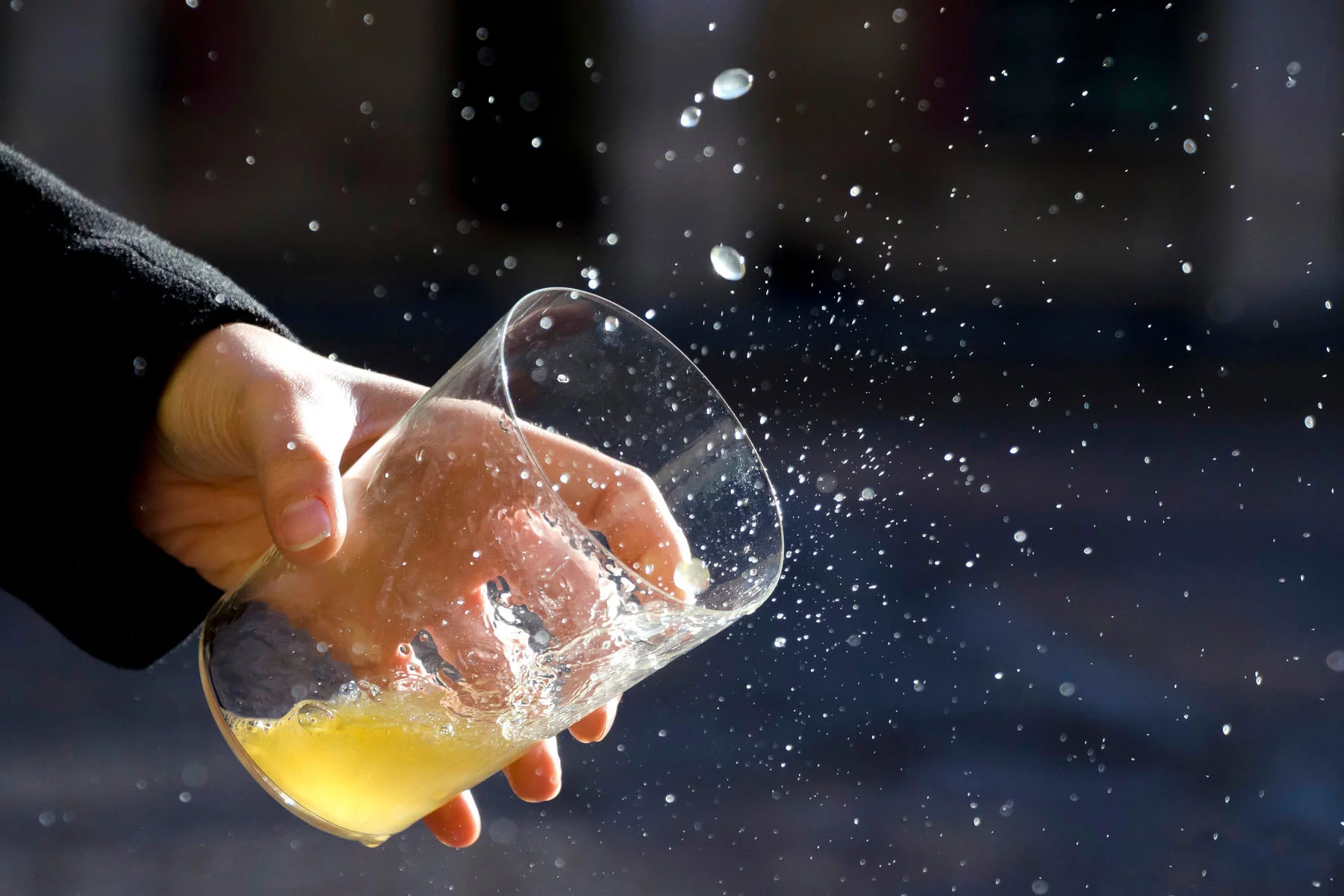
And, of course, if you are in Asturias, you will find that cider houses rule. In this northern part of Spain, sidra is the tipple of choice in any bar and restaurant you are likely to step into. And the waiters will delight you by pouring it into your glass from a height.
Wine
Winemaking is a centuries-old tradition in Spain, which has made the country the world’s third-largest wine producer, after Italy and France. Spain also has the largest surface area of vines in the world, with almost a million hectares spread across some 4,300 wineries. Spain’s most famous wine-growing regions are Castilla la Mancha, La Rioja, Catalonia, Extremadura, and Valencia.
When it comes to wine consumption, Spain is outpaced by neighboring Portugal. Indeed, the average Spaniard drank 23.9 liters of wine in 2020, compared to the average Portuguese who consumed 51.9 liters.
Below are some of the most popular Spanish wines with a protected designation of origin.
- Rioja
- Cava
- La Mancha
- Rueda
- Ribera del Duero
Popular spirits, liqueurs, and cocktails
Spain has a tradition of producing fine brandy and liqueurs. Oruja brandy hails from northern Spain, while Brandy de Jerez hails from the sherry-producing southwest. In fact, an oruja over ice makes for a lovely after-dinner treat.
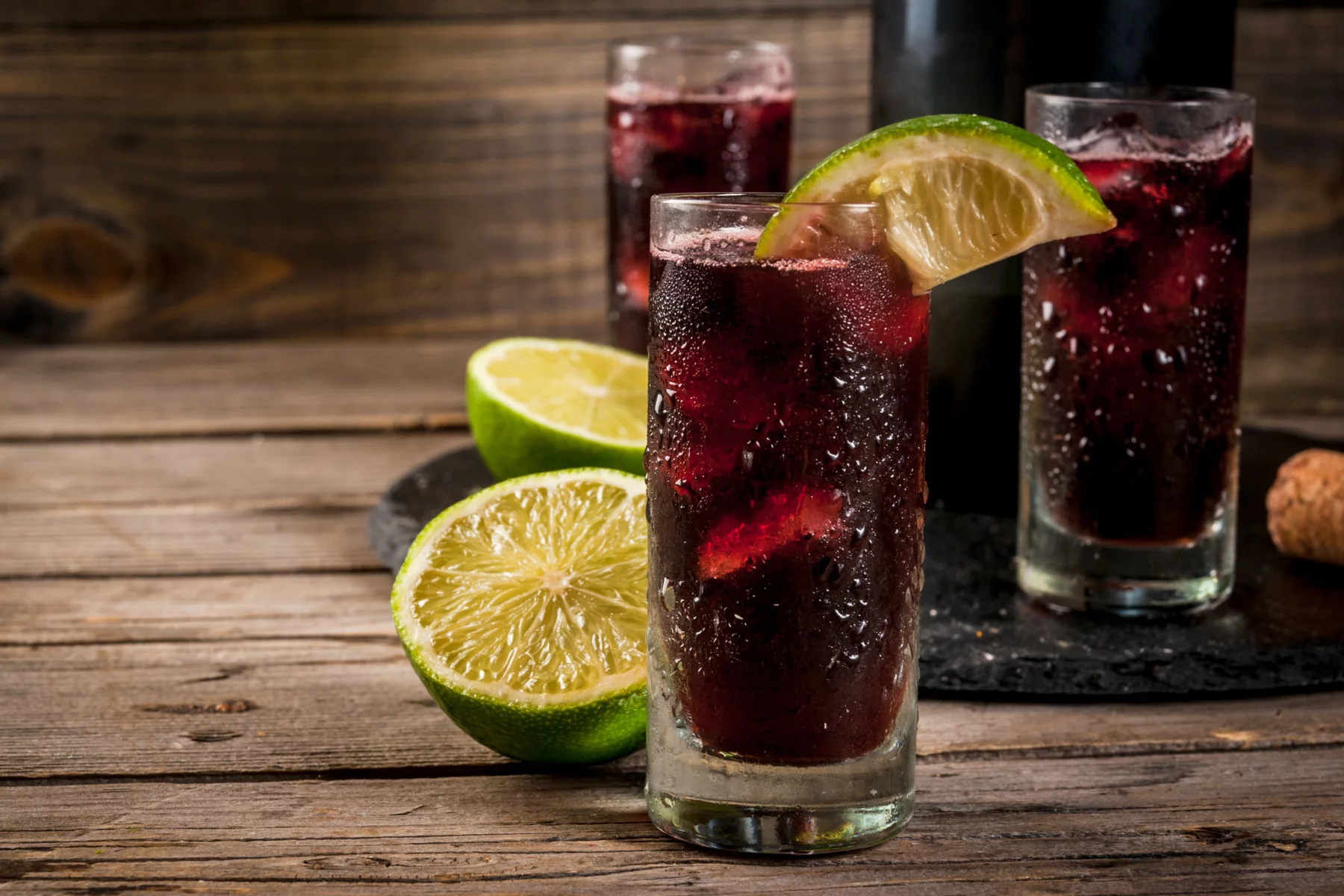
Spain also produces a range of regional liqueurs, each of which has its own special character and tradition, and is enjoyed at various times of the day. For instance, you might want to try a Café licor d’Alcoy; a coffee liqueur from Alicante, or the Ibiza-produced Hierbas ibicenas; a herby liqueur that is commonly consumed as a digestif.
Cocktails made with wine are also popular among locals. For example, Valencia water (agua de Valencia) is made by mixing Spanish sparkling wine (cava) with orange juice. The original recipe includes gin and vodka as well, so beware of the kick! Alternatively, you could just keep it simple and try a red wine mixed with cola – a calimocho.
Other Spanish drinks
Horchata
Horchata (Orxata in the Valencian language) is a highly nutritious, refreshing Spanish non-alcoholic drink that originated in Valencia. It is especially popular during the hot summer months.

Horchata contains water, sugar, and ground tiger nuts. It is usually served with a sweet pastry called a farton.
Sangria
Although sangria has become an international symbol of Spanish culture – along with flamenco, paella, and bullfighting – it is not actually that popular with Spaniards. On the contrary, this fruity, refreshing drink is mostly a tourist favorite.
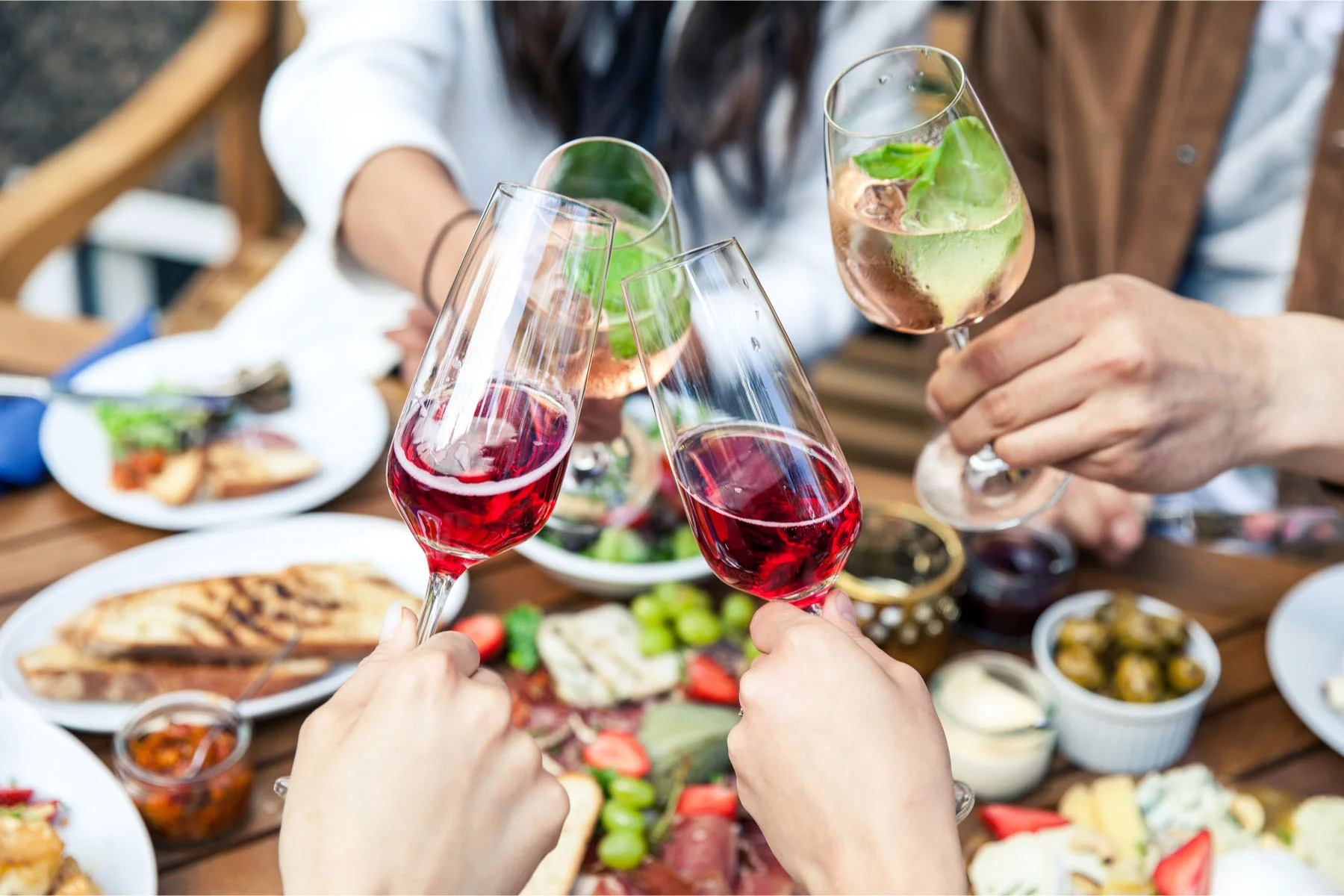
Having said that, sangria is a great choice for house parties during the hot summer months. You will also find it at one of the many chiringuitos (beachside bars) where it pairs perfectly with tapas or appetizers.
You will find various versions of sangria across Spain. Typically, it consists of wine (mainly red, but it can also be white), chopped fruit (often lemon, orange, apple, peach, and others – the choice is yours), sugar, and a dash of vermouth or brandy. And the best part is, it’s both delicious and easy to prepare!
As with its world-renowned cuisine, the Spanish drinking culture has regional influences. Sidra is king in Asturias, while the people of La Rioja and other regions are proud of their wine. Wherever you are, though, you should have no problem finding your own drink of choice in Spain. Nor should you have much trouble finding good food and people to enjoy it with.
Useful resources
- Foods Wines from Spain – gives news and features about Spanish food products and wines
- Spain.info – a multilingual site about Spain, with practical tips and useful information for tourists
- Olive Press – provides hospitality news in English
